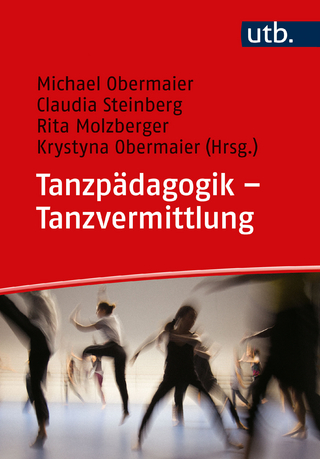
Well Connected
Handspring Publishing Limited (Verlag)
978-1-909141-92-6 (ISBN)
In essence, Freedom to Move describes what goes wrong in the spine and what to do about it. It integrates the applicable contemporary neuroscience around spinal movement and pain with the clinical evidence and understanding gained from the author’s enquiring practice, and her exploration of various movement approaches and their contribution - or otherwise, to spinal well-being.
It examines the relationship between healthy torso structure and functional control and describes and explains the author’s model of spinal dysfunction – the remediation of which forms the basis of the author’s model of care for the spine, The Key Approach®.
The book’s main focus is on a practical, therapeutic exercise/movement approach which addresses the common movement faults and dysfunctions observed in people with spinal pain and stiffness.
In particular, the Fundamental Patterns of control are introduced as important, innate ‘key’ movements which naturally provide the sound foundations necessary for a healthy spine – but which have commonly been ‘lost’ in the movement repertoire of people with spinal pain syndromes.
These are re-established and reincorporated into various poses, movements and stretches by way of specifically directed mindful movement explorations. The client is helped to regain more optimal function and move out of pain - with more freedom.
The approach is applicable within all industry models of teaching therapeutic movement: in the rehabilitation of spinal pain within physiotherapy, Pilates and Yoga; and in the fitness industry, for injury prevention, health promotion and optimising spinal health in exercise programmes in general.
Josephine Key is a neuro-musculo-skeletal physiotherapist with over 45 years in clinical practice – of which the last 30 years or so have been devoted to seeking a better understanding of the spine in health - and its dis-ease. She gained a Post Graduate Diploma in Manipulative Therapy from Sydney University in 1984. The evolution of her model of care, The Key Moves® Programme of Therapeutic Exercise and Movement, is the result of evaluating and integrating the available movement and neuroscience; the ample evidence gleaned from clinical practice; the exploration and evaluation of various movement disciplines (Body Mind Centering; various forms of Yoga; Somatics; Feldenkrais; Pilates; Gyrotonic, streams within the fitness industry) - for what they offer in terms of healthy spinal control – or otherwise. Josephine is increasingly exploring the felt sense of movement and the ability to exploit neuro-plastic change - ‘retraining our brain’ to organise healthier movement patterns and better biomechanics. She has developed and continues to refine classes for spinal health – to help clients move without pain and gain enhanced function. Presently, her practice conducts over 40 ‘Key Moves’® classes a week. This unique programme has been running for over 16 years. Central to it is the re-establishment of important key Fundamental Patterns of Control – which also provide a vehicle to access restrictions in the fascial system, help to rebalance the muscular and nervous systems and restore optimal joint and soft tissue loading, It represents a paradigm shift for exercise therapy for the spine – both therapeutic and preventative. Josephine has had a number of papers published on her work in the international peer reviewed journal, Bodywork and Movement Therapy. Her paper “The Core: Understanding it and retraining it’d dysfunction” was one of the journal’s five most downloaded papers in 2014. She is the author of the text book BACK PAIN: A movement problem. A clinical approach incorporating relevant research and practice - published by Elsevier, Edinburgh in 2010. She has presented at the International World Congress on Low Back and Pelvic Pain in 2007, 2010 & 2013; the Fascia Research Congress in 2009, 2012 & 2015; The Physiotherapy New Zealand Conference 2014. She conducts workshops nationally and internationally for physiotherapists and interdisciplinary manual therapists and movement teachers.
Acknowledgements
Introduction
Glossary of terms
Glossary of abbreviations
Part A Laying the groundwork for an enhanced understanding of the spine in health and disease
Chapter 1 The spine: Its role in movement and musculoskeletal pain
Chapter 2 The vertebral axis: A marriage between biotensegrity and neuro-motor control
Chapter 3 Defining the problem: What goes wrong in the spine that leads to pain?
Chapter 4 The Key fundamental patterns of the torso: The basic movements supporting healthy spinal control
Part B Getting to work re-building enhanced spinal movement control
Chapter 5 Assessment: Altered movement behavior is often hiding in plain sight.
Chapter 6 Key Moves 1: Principles and practice of movement therapy for spinal rehabilitation
Chapter 7 Key Moves 2: kinesthetic therapeutic movement exercises for spinal health and wellbeing
Chapter 8 Waking up the spine: Further aspects of control in movement therapy
Chapter 9 Constructing a class
Chapter 10 Changing movement behavior: Mindfulness, perception and felt sense
| Erscheinungsdatum | 26.10.2018 |
|---|---|
| Zusatzinfo | About 310 photographs and drawings |
| Sprache | englisch |
| Maße | 189 x 246 mm |
| Themenwelt | Sachbuch/Ratgeber ► Sport ► Tanzen / Tanzsport |
| Medizin / Pharmazie ► Naturheilkunde | |
| Medizin / Pharmazie ► Physiotherapie / Ergotherapie | |
| ISBN-10 | 1-909141-92-5 / 1909141925 |
| ISBN-13 | 978-1-909141-92-6 / 9781909141926 |
| Zustand | Neuware |
| Haben Sie eine Frage zum Produkt? |
aus dem Bereich


